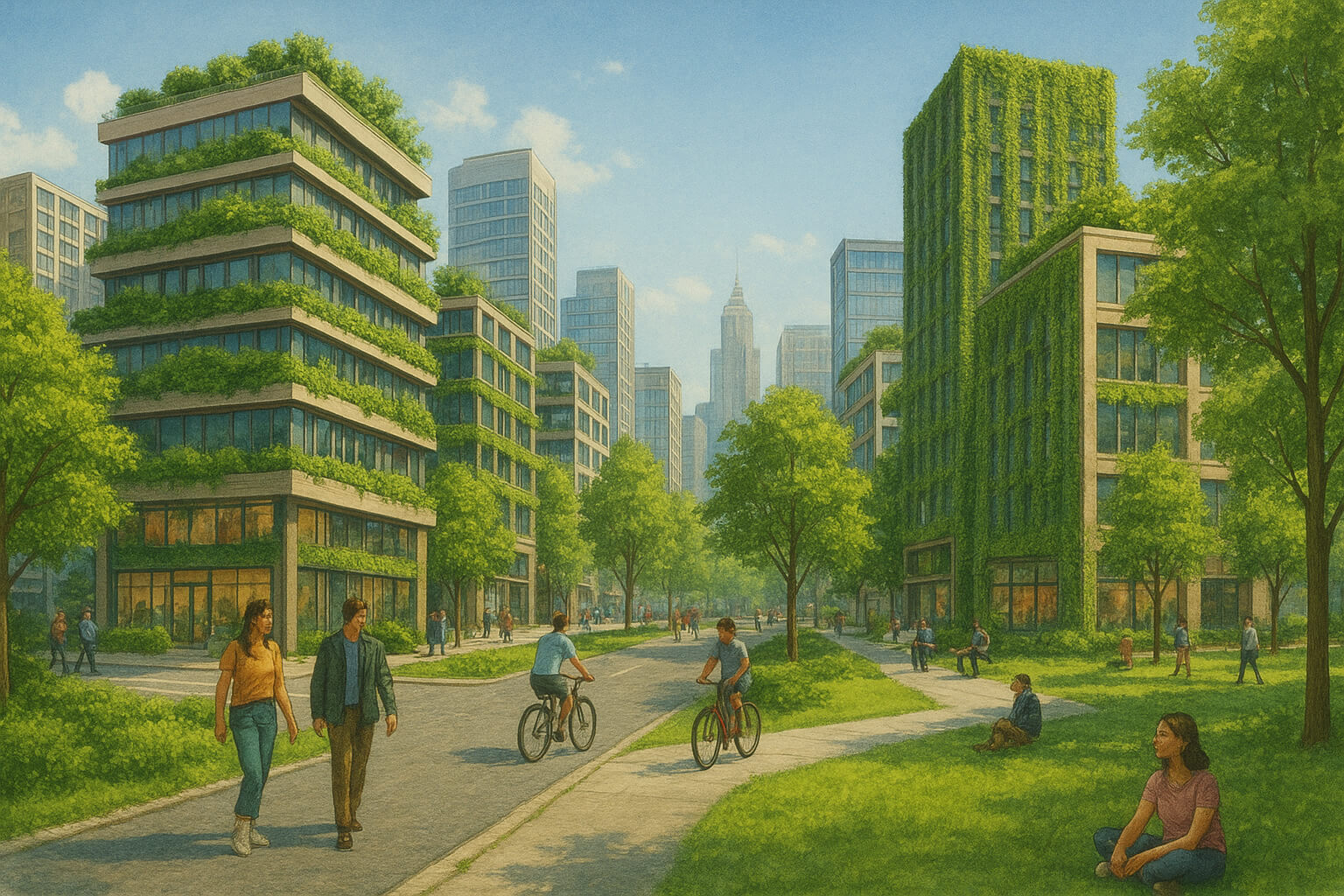The Benefits of Urban Greening Projects

As cities grow upward and outward, the need for livable, breathable, and sustainable urban spaces becomes more urgent. Today’s concrete jungles are being reimagined through urban greening initiatives—transformative projects that bring nature back into the built environment. From rooftop gardens to tree-lined streets and vertical green walls, these interventions go far beyond aesthetics; they’re part of a broader strategy to address climate change, support community well-being, and foster long-term urban resilience.
Environmental Benefits of Urban Greening
1. Cleaner, Healthier Air
- Green spaces function as natural air filters. Trees, shrubs, and other vegetation absorb pollutants like carbon dioxide, sulfur dioxide, and particulate matter, while releasing oxygen. In areas where smog and industrial emissions are common, urban greening can significantly improve air quality.
- Explore: Why Biodiversity Matters – A deeper look at how plant life and ecosystems contribute to human and planetary health.
2. Cooling Down Urban Heat Islands
- Cities tend to trap heat due to dark, impermeable surfaces like asphalt and concrete. This creates urban heat islands—localized areas where temperatures can be several degrees higher than surrounding rural regions. Strategic planting of trees and implementation of green roofs can drastically reduce surface and ambient temperatures, making neighborhoods more comfortable and reducing heat-related illnesses.
3. Stormwater Absorption and Flood Prevention
- Traditional infrastructure often struggles to manage heavy rainfall, leading to street flooding and sewer overflows. Vegetated areas—like bioswales, rain gardens, and rooftop greenery—absorb rainwater, slow runoff, and help recharge groundwater systems.
- Related read: Green Home Solutions: Making Your House Eco-Friendly – Includes tips that scale from homes to citywide solutions.
Social and Health Benefits
1. Mental Health and Well-Being
- Numerous studies have shown that access to nature reduces stress, anxiety, and symptoms of depression. Even small urban parks or tree-lined walkways provide psychological relief from the sensory overload of busy cities. Green spaces offer residents a chance to unwind, reflect, and reconnect with their surroundings.
2. More Active, Healthy Communities
- Greener cities promote movement. Parks, walking trails, and bike-friendly paths make it easier for residents to engage in daily exercise. When designed inclusively, green spaces also accommodate seniors, children, and people with disabilities—encouraging healthier lifestyles across all age groups.
- Read more: The Power of Community in Health Recovery – How shared, health-conscious spaces enhance well-being.
3. Strengthening Social Bonds
- Urban greening fosters community cohesion. Whether it’s through neighborhood gardening projects, volunteer-led park maintenance, or city-funded tree planting programs, these spaces become common ground—literally and figuratively—for collaboration and connection.
- Check out: The Power of Collective Action: When Communities Unite
Economic Benefits
1. Boosting Property Values
- Studies show that proximity to parks and green infrastructure can raise property values. Homes and businesses near green spaces are often more desirable, attracting investment and encouraging responsible urban development.
2. Creating Green Jobs
- Urban greening creates employment in fields like landscaping, urban agriculture, arboriculture, horticulture, and environmental education. These jobs are often local and sustainable, contributing to circular economies within communities.
3. Lowering Energy Costs
- Green roofs and tree canopies naturally insulate buildings, lowering the need for air conditioning in summer and heating in winter. This not only reduces energy bills but also cuts down on emissions.
- Explore: Creating Shared Value in Business – How businesses and cities alike can benefit from investing in sustainability.
Real-World Urban Greening Success Stories
New York City’s High Line
- What was once an abandoned railway has become a thriving elevated park, attracting tourists, supporting local biodiversity, and providing much-needed green space in Manhattan. The High Line is a model of adaptive reuse and green infrastructure.
Singapore’s Vertical Forests and Green Skyscrapers
- Singapore has earned global recognition for integrating nature into its urban planning. With living architecture—from green walls to rooftop gardens—the city combats heat, improves air quality, and reduces noise pollution.
Detroit’s Community Gardens
- In a city once known for decline, local residents are turning vacant lots into gardens, producing food, beautifying neighborhoods, and building community resilience. These grassroots projects often double as youth education and job training centers.
- See also: Why Grassroots Movements Matter
How You Can Support Urban Greening
Even if you’re not a city planner, there are many ways to get involved:
- Support local greening efforts by volunteering or donating to community garden projects.
- Advocate for more public parks, green infrastructure, and tree-planting initiatives.
- Transform your own space—from balcony planters to backyard composting, small changes matter.
- Encourage your workplace or school to invest in green improvements.
Get inspired: Beyond Money: Other Ways You Can Support a Cause
Final Thoughts
Urban greening is not a luxury—it’s a necessity. In the face of growing climate challenges, health disparities, and social isolation, green infrastructure offers a powerful, multi-dimensional solution. It makes our cities not only more beautiful, but more equitable, healthier, and resilient.
By supporting urban greening, whether through local involvement or policy advocacy, you’re helping design a future where cities and nature coexist—where both people and the planet can thrive.
